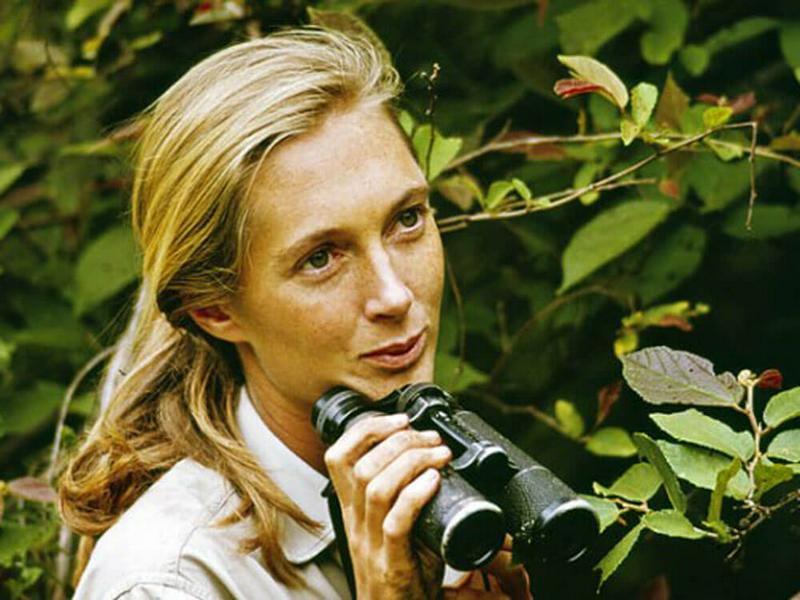Jane Goodall’s Journey
By | November 11, 2021

Jane Goodall’s path may have been different had her father given her a teddy bear instead of a stuffed chimpanzee. Goodall still has that chimpanzee, named Jubilee. In 1957, she visited a friend’s farm in the Kenya highlands. She then called Louis Leakey, the Kenyan archaeologist and paleontologist. Her goal was to talk about animals. Her plans took a turn though, which changed her life.

Louis Leakey Gave Goodall Her Start
Leakey was interested in the insights that the study of the great apes could provide to understand the behavior of early hominids. Goodall did not have a background in ethology or any related field, but she had worked as a secretary before. Leakey asked Goodall to be his secretary and he traveled with Goodall and his wife to Olduvai Gorge in Tanganyika (what is now Tanzania) to hunt for fossils.
In 1958, Leakey then sent her to London so she could study primate anatomy with John Napier. On July 14, 1960, she went to Gombe Stream National Park with her mother (the chief warden, David Anstey, required this for safety). While there, she studied the Kasakela chimpanzee community. She took an unconventional approach, giving the chimpanzees names instead of numbering them; prior to Goodall’s work, researchers numbered the animals so that they did not become emotionally attached to them. Goodall also noted that they have individual personalities, are capable of emotions, and rational thought. She observed that they had behaviors we consider more human, like giving hugs and tickling each other. For Goodall, these behaviors were evidence of the bonds between the chimpanzees and the similarities between chimpanzees and humans.
Her work also challenged two beliefs: only humans use tools and chimpanzees are vegetarians. She observed a chimpanzee “fishing” for termites, using stalks of grass to remove termites from the mound. She also saw them stripping leaves off of twigs to create rudimentary tools.

She Found That They Are Like Humans In Some Dark Ways Too
However, Goodall also observed less peaceful behaviors as well. They could be aggressive, and she saw that they hunted and ate smaller primates, like the colobus monkeys. At one point she observed a chimpanzee hunting group trap a colobus monkey in a tree. One member of the group climbed the tree, caught it, and killed it. Other group members then ate parts of the carcass.

Her Degree Came After She Completed Her Initial Fieldwork
In 1962, Leakey sent Goodall to the University of Cambridge since she did not have a degree prior to beginning her fieldwork; here, she becomes one of the only people to be admitted to a Ph.D. program at Cambridge before she obtained a university education. After she earned her BA from Newnham College, Cambridge, she went to Darwin College, Cambridge, and obtained her Ph.D. in ethology. She completed her thesis in 1966 under Robert Hinde. Her thesis, which was about chimpanzee behavior, focused on her first five years of studying the chimpanzees at the Gombe Reserve.

Being Accepted By The Chimpanzees
She continued her studies, finding that the chimpanzees could be violent; she observed dominant females in a troop killing other females to maintain their positions. She also observed the Gombe Chimpanzee War, which occurred from 1974-1978. From her observations, she noticed some of the darker similarities between humans and chimpanzees. She would later describe what she saw during the Gombe Chimpanzee War in her 1990 memoir, My Thirty Years with the Chimpanzees of Gombe. Because of her methodology, she became the only human to be accepted into chimpanzee society, when, for a period of 22 months, she became the lowest-ranking member of a troop. However, an aggressive male named Frodo forced her to leave the troop when he became the alpha male.

Continuing Work And Recognition
Goodall established the Jane Goodall Institute (JGI) in 1977 to support the Gombe research. JGI is a community-centered conservation and development program in Africa, and, in 1991, a global youth program, Roots & Shoots, began. She also founded the Tchimpounga Chimpanzee Rehabilitation Center in the Republic of Congo and the Lake Tanganyika Catchment Reforestation and Education (TACARE) project to protect chimpanzees’ habitat from deforestation. TACARE reforests the hills around Gombe and educates the communities on sustainability and agriculture; they also support young girls. While her activism on behalf of the chimpanzees she originally observed continues, she has expanded it to include efforts to protect all animals and general environmental efforts as global warming affects numerous species.
She has been the recipient of a number of awards and has had additional recognition, including an honorary Doctor of Science from the Open University of Tanzania on June 19, 2006. In 2019, Time magazine named her one of the 100 most influential people in the world, and in 2021, she received the Templeton Prize.
